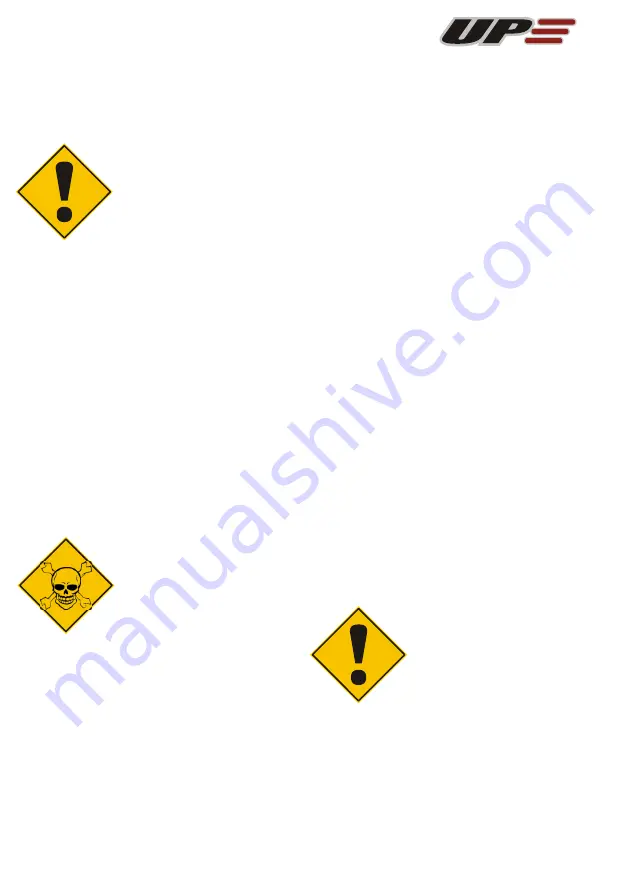
______________________________________________________________________________
17
minutely checked at the factory, and
corresponds exactly to the wing certified
by the DHV.
ATTENTION!
The Trango XC³
must be test-inflated on flat
ground, and the first flight
must be carried out by a
professional, before the wing is
delivered to its new owner
.
Adjustments
The UP Trango XC³ has undergone an
extensive development program and
series of flight tests to ensure that the
production model exhibits the optimum
characteristics with regard to safety,
handling and flight performance.
As with all products from UP International,
the UP Trango XC³ is manufactured to the
highest quality and precision. The line
lengths of each glider are individually
checked and recorded before dispatch.
Under no circumstances should the
lengths of the lines or risers of the UP
Trango XC³ be altered in any way.
WARNING!
Any change to the
configuration of the wing will
invalidate certification!
The only change allowed is to
the length of the lower brake
line. This should only be done by
an experienced person.
Position of the brakes
The UP Trango XC³ is delivered from the
factory with what we feel is the best brake
position for most pilots. But tall or short
pilots, or those with a harness with non-
standard attachment points might consider
it necessary to change the position of the
brake handles.
If the brakes are to be shortened, it is
extremely important to avoid the
adjustment affecting the glider's trim
speed. There must always be some
slack in the brakes when they are fully
released. This can be checked with the
glider inflated above the pilot's head.
There should be a noticeable bow in
the brake lines, and the brakes should
be having no effect on the shape of the
trailing edge.
If the brake lines are to be lengthened,
it is important to ensure that the pilot
can still stall the canopy (i.e. during
extreme
manoeuvres
or
landing)
without the need to take wraps.
If you do feel the need to change the
brake line lengths, do so a little (3-4
cm) at a time, and preferably whilst at
an
easy
training
slope.
Check
especially that both lines are the same
length, as any asymmetry will lead to
tiring and possible dangerous flying
characteristics.
If you have any questions or concerns
with reference to the brake line lengths
then seek advice from either your UP
dealer
or
directly
from
UP
International. To tie the brake line onto
the brake handle use the following
simple fisherman's knot, as shown in
illustration 5. This knot guarantees the
least amount of line weakening.
BEWARE!
Loose or incorrect
brake knots can cause
serious accidents through
loss of the steering of the
glider!






























